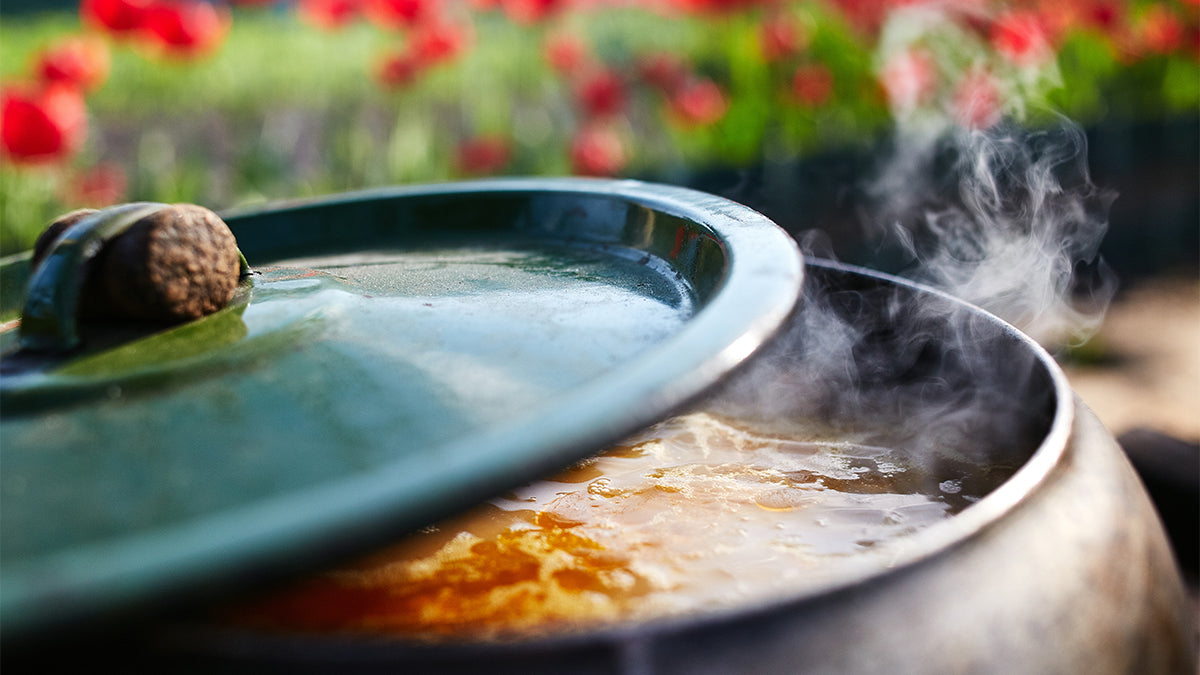As the summer cookout season approaches, it's the perfect time to explore innovative and energy-efficient cooking methods for outdoor celebrations and emergencies.
One such method, rich in history and practicality, is the haybox cooking method.

What Is Haybox Cooking?
The haybox cooking method—also known as thermal cooking—dates back over a century.
A haybox was a simple crate or other container filled with hay, used for its excellent insulating properties. The technique involves heating food to a boil, then placing it inside the haybox, where it continues to cook without additional fuel.
This method was a vital fuel-saving technique during World War II as a way to save fuel during rationing, only requiring enough fuel for the initial boil.
Not Just for Summer Cookouts
Having a versatile, off-grid cooking method is for more than just a campout or backyard BBQ. This is an excellent solution for cooking in times of emergencies.
While campfires are great for marshmallows and hot dogs, cooking a hearty meal—like a stew—requires a more efficient approach. The haybox offers a reliable alternative, especially during power outages when conventional slow cookers fail.

An Excellent Alternative to Slow Cooking in Survival
Crock pots are a staple in many homes, providing convenience and hearty meals without much effort or oversight.
However, this forces you to rely on electricity, which can be a serious drawback during emergencies. Whether there’s a power outage or you're forced to flee your home, you may be left without access to power—leaving your crock pot useless.
The haybox, on the other hand, mimics the slow-cooking process without the need for a continuous power source, propane, or wood.

How to Use a Haybox
Here's how to harness the power of the haybox for your next meal:
- Prepare the Meal – Start by placing all ingredients in a conventional pot and bringing it to a boil over a stove. (The InstaFire Inferno Pro is a useful and convenient stove for using outdoors. If indoors, you can use the Vesta Indoor Space Heater & Cook Stove powered by canned heat.)
- Transfer to Haybox – Once boiling, cover the pot and place it in the haybox. (You can also use any modern equivalent, like a Wonderbag or insulated cooler.)
- Insulate and Cook – Add more insulating material around and over the pot. The insulation retains heat, allowing the food to cook slowly over several hours.

Give It a Modern Twist
You no longer have to rely on a wooden crate to make this method work. Modern haybox variations include the Wonderbag—which uses polystyrene beads—and DIY versions using Styrofoam coolers. These materials offer better hygiene compared to traditional hay, and may be easier to track down depending on your location.
One of the pitfalls of the haybox, however, is that without external temperature regulation, there exists the possibility of the food spending too much time in the “danger zone,” or the range of temperatures at which bacteria can flourish. (The “danger zone” is between 41°F to 141°F.)
To ensure your food remains safe to eat, simply bring the food back to a boil before consumption.
Embrace the Haybox Method
Embracing the haybox method this summer can enhance your outdoor cooking experiences, provide a reliable off-grid solution, and serve as an excellent alternative to traditional slow cooking.
As families and friends gather for summer celebrations and cookouts, the haybox can be a star player in delivering delicious, energy-efficient meals.
Let us know if you give it a try!
